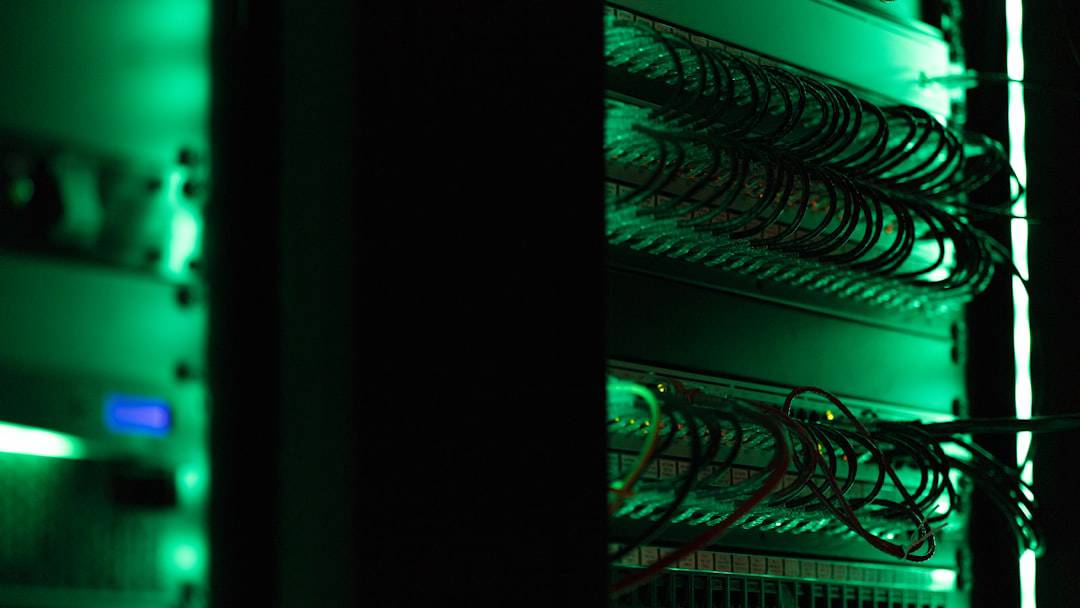Brute force attacks are a cybersecurity threat where attackers attempt to gain unauthorized access to systems or accounts by systematically trying all possible username and password combinations. This method is commonly used in remote desktop attacks, targeting the Remote Desktop Protocol (RDP) to access computers or networks. These attacks are typically automated, utilizing software capable of rapidly testing thousands or millions of combinations in a short time.
The effectiveness of brute force attacks, particularly against systems with weak or easily guessable credentials, makes them a serious cybersecurity concern. Successful attacks can lead to data theft, malware installation, or other malicious activities. Understanding the risks and consequences of brute force remote desktop attacks is crucial for individuals and organizations to implement proactive prevention measures.
Detecting and preventing brute force attacks presents a significant challenge for cybersecurity professionals due to their nature. However, comprehending the methods employed in these attacks and implementing best practices for securing remote desktop access can help mitigate risks and protect against potential consequences.
Key Takeaways
- Brute force attacks involve trying every possible combination of usernames and passwords to gain unauthorized access to a system.
- Risks of brute force remote desktop attacks include unauthorized access to sensitive information, data theft, and potential system damage.
- Common methods used in brute force remote desktop attacks include dictionary attacks, credential stuffing, and password spraying.
- Prevention and protection against brute force remote desktop attacks can include implementing strong password policies, using multi-factor authentication, and limiting login attempts.
- Best practices for securing remote desktop access include using virtual private networks (VPNs), regularly updating software and security patches, and monitoring user activity for any suspicious behavior.
- Monitoring and detecting brute force remote desktop attacks can involve setting up intrusion detection systems, analyzing login logs, and implementing automated alert systems.
- Responding to brute force remote desktop attacks may involve temporarily blocking IP addresses, resetting compromised passwords, and conducting a thorough security review to prevent future attacks.
Risks and Consequences of Brute Force Remote Desktop Attacks
Immediate Consequences of a Successful Attack
When an attacker successfully gains access to a remote desktop through a brute force attack, they can potentially compromise sensitive data, install malware, disrupt operations, and cause financial or reputational damage. For individuals, this can mean identity theft, financial loss, or invasion of privacy.
Long-term Consequences and Ongoing Harm
In addition to the immediate impact of a successful brute force attack, there are also long-term consequences to consider. Once an attacker has gained access to a system or network, they may continue to exploit it over time, potentially causing ongoing harm and making it difficult to fully eradicate the threat. This can result in prolonged disruption, increased costs for remediation, and loss of trust from customers, partners, and stakeholders.
Proactive Measures to Prevent Brute Force Attacks
It’s important for individuals and organizations to recognize the risks and consequences of brute force remote desktop attacks in order to take proactive measures to prevent them. By understanding the common methods used in these attacks and implementing best practices for securing remote desktop access, it is possible to reduce the likelihood of a successful attack and minimize the potential impact.
Common Methods Used in Brute Force Remote Desktop Attacks

Brute force remote desktop attacks typically involve the use of automated tools or scripts that systematically try different combinations of usernames and passwords until the correct credentials are found. These tools can be highly sophisticated and capable of trying thousands or even millions of combinations in a short amount of time. Attackers may also use techniques such as password spraying, where they try a small number of commonly used passwords across a large number of accounts, or credential stuffing, where they use known username and password combinations obtained from previous data breaches.
In addition to using automated tools, attackers may also employ other methods to increase their chances of success in a brute force attack. For example, they may use social engineering techniques to gather information about potential usernames and passwords, such as through phishing emails or by exploiting weak security practices. They may also use techniques such as distributed denial-of-service (DDoS) attacks to overwhelm the target system and distract security personnel while the brute force attack is carried out.
By understanding the common methods used in brute force remote desktop attacks, individuals and organizations can better prepare themselves to prevent and protect against these threats. It’s important to implement strong security measures and best practices for securing remote desktop access in order to mitigate the risk of a successful attack.
Prevention and Protection Against Brute Force Remote Desktop Attacks
| Prevention and Protection Against Brute Force Remote Desktop Attacks |
|---|
| Use strong and complex passwords |
| Implement account lockout policies |
| Enable network level authentication (NLA) |
| Use multi-factor authentication (MFA) |
| Regularly update and patch remote desktop software |
| Monitor and log remote desktop login attempts |
Preventing and protecting against brute force remote desktop attacks requires a multi-faceted approach that includes implementing strong security measures, educating users about best practices for password security, and using advanced authentication methods. One of the most effective ways to prevent brute force attacks is by using strong, complex passwords that are difficult for attackers to guess or crack. This includes using a combination of uppercase and lowercase letters, numbers, and special characters, as well as avoiding easily guessable information such as birthdays or common words.
In addition to using strong passwords, individuals and organizations should also consider implementing multi-factor authentication (MFA) for remote desktop access. MFA requires users to provide two or more forms of verification before gaining access, such as a password combined with a one-time code sent to their mobile device. This adds an extra layer of security that can help prevent unauthorized access even if an attacker manages to guess a user’s password.
Another important aspect of preventing brute force attacks is to limit the number of login attempts allowed before an account is locked out or requires additional verification. This can help prevent attackers from repeatedly trying different combinations of usernames and passwords until they find the correct one. Additionally, individuals and organizations should regularly update their software and systems to patch any known vulnerabilities that could be exploited by attackers.
By taking proactive measures to prevent and protect against brute force remote desktop attacks, individuals and organizations can reduce the likelihood of a successful attack and minimize the potential impact on their systems and data.
Best Practices for Securing Remote Desktop Access
Securing remote desktop access requires implementing best practices for password security, user authentication, and system configuration. One of the most important best practices is to use strong, complex passwords that are difficult for attackers to guess or crack. This includes using a combination of uppercase and lowercase letters, numbers, and special characters, as well as avoiding easily guessable information such as birthdays or common words.
It’s also important to avoid reusing passwords across multiple accounts, as this can increase the risk of unauthorized access if one account is compromised. In addition to using strong passwords, individuals and organizations should also consider implementing multi-factor authentication (MFA) for remote desktop access. MFA requires users to provide two or more forms of verification before gaining access, such as a password combined with a one-time code sent to their mobile device.
This adds an extra layer of security that can help prevent unauthorized access even if an attacker manages to guess a user’s password. Another best practice for securing remote desktop access is to limit the number of login attempts allowed before an account is locked out or requires additional verification. This can help prevent attackers from repeatedly trying different combinations of usernames and passwords until they find the correct one.
Additionally, individuals and organizations should regularly update their software and systems to patch any known vulnerabilities that could be exploited by attackers. By implementing these best practices for securing remote desktop access, individuals and organizations can reduce the risk of unauthorized access through brute force attacks and better protect their systems and data.
Monitoring and Detecting Brute Force Remote Desktop Attacks

Monitoring and detecting brute force remote desktop attacks requires implementing robust security measures and using advanced threat detection tools. One important aspect of monitoring for brute force attacks is to keep track of login attempts and failed authentication events. By monitoring these events, individuals and organizations can identify patterns or anomalies that may indicate a potential brute force attack in progress.
In addition to monitoring login attempts, individuals and organizations should also consider using intrusion detection systems (IDS) or intrusion prevention systems (IPS) to automatically detect and block suspicious activity related to brute force attacks. These systems can analyze network traffic in real-time and identify patterns or signatures associated with known attack methods. Another important aspect of monitoring for brute force attacks is to regularly review system logs and audit trails for any signs of unauthorized access or suspicious activity.
By regularly reviewing these logs, individuals and organizations can identify potential security incidents and take appropriate action to mitigate the risk. By implementing robust monitoring and detection measures for brute force remote desktop attacks, individuals and organizations can better protect their systems and data from unauthorized access and potential compromise.
Responding to Brute Force Remote Desktop Attacks
Responding to brute force remote desktop attacks requires a swift and coordinated effort to mitigate the risk and prevent further unauthorized access. If an individual or organization suspects that they are being targeted by a brute force attack, it’s important to take immediate action to secure their systems and data. One important step in responding to a brute force attack is to lock out any affected accounts or systems to prevent further unauthorized access.
This may involve temporarily disabling remote desktop access or blocking specific IP addresses associated with the attack. In addition to locking out affected accounts or systems, individuals and organizations should also consider conducting a thorough investigation into the source and nature of the attack. This may involve analyzing system logs, network traffic, or other forensic evidence to identify the attacker’s methods and potential vulnerabilities that were exploited.
Once the immediate threat has been mitigated, it’s important for individuals and organizations to take steps to strengthen their security measures and prevent future attacks. This may involve implementing stronger password policies, enabling multi-factor authentication, updating software and systems to patch known vulnerabilities, and educating users about best practices for securing remote desktop access. By responding quickly and effectively to brute force remote desktop attacks, individuals and organizations can minimize the potential impact on their systems and data while taking proactive measures to prevent future attacks.
If you are interested in learning more about the security concerns related to remote desktop access, you may want to check out this article on challenges and opportunities in the metaverse, which discusses privacy and security concerns in digital reality. (source) This article provides valuable insights into the potential risks and vulnerabilities associated with accessing remote desktops, and offers recommendations for mitigating these concerns.
FAQs
What is brute force remote desktop?
Brute force remote desktop is a method used by attackers to gain unauthorized access to a remote desktop by systematically trying different username and password combinations until the correct one is found.
How does brute force remote desktop work?
Attackers use automated tools to repeatedly attempt to log in to a remote desktop using different username and password combinations. This process continues until the correct credentials are discovered, allowing the attacker to gain access to the system.
What are the risks of brute force remote desktop attacks?
Brute force remote desktop attacks can lead to unauthorized access to sensitive information, data theft, and potential damage to the targeted system. It can also result in the compromise of other systems connected to the network.
How can organizations protect against brute force remote desktop attacks?
Organizations can protect against brute force remote desktop attacks by implementing strong password policies, using multi-factor authentication, limiting the number of login attempts, and regularly monitoring and logging remote desktop access attempts.
What should individuals do to protect their remote desktop from brute force attacks?
Individuals can protect their remote desktop from brute force attacks by using strong, unique passwords, enabling multi-factor authentication if available, and keeping their remote desktop software and operating system up to date with the latest security patches.











Leave a Reply